A pioneer in the single-malt Scotch whisky category, The Glenlivet, founded by George Smith in 1824, has been releasing The Winchester Collection in tribute to its master distiller, Alan Winchester, since 2014.
The Vintage 1964 was unveiled that year, followed by the 1966 in 2016.

The Glenlivet Winchester Collection Vintage 1967
Now The Glenlivet’s 50-year-old single-malt series welcomes its third expression with the Vintage 1967, limited to just 150 bottles priced at $25,000. Its bottle and display case were made in collaboration with award-winning, London-based, Scottish-Welsh designer Bethan Gray, which elevates them to collectors’ items.
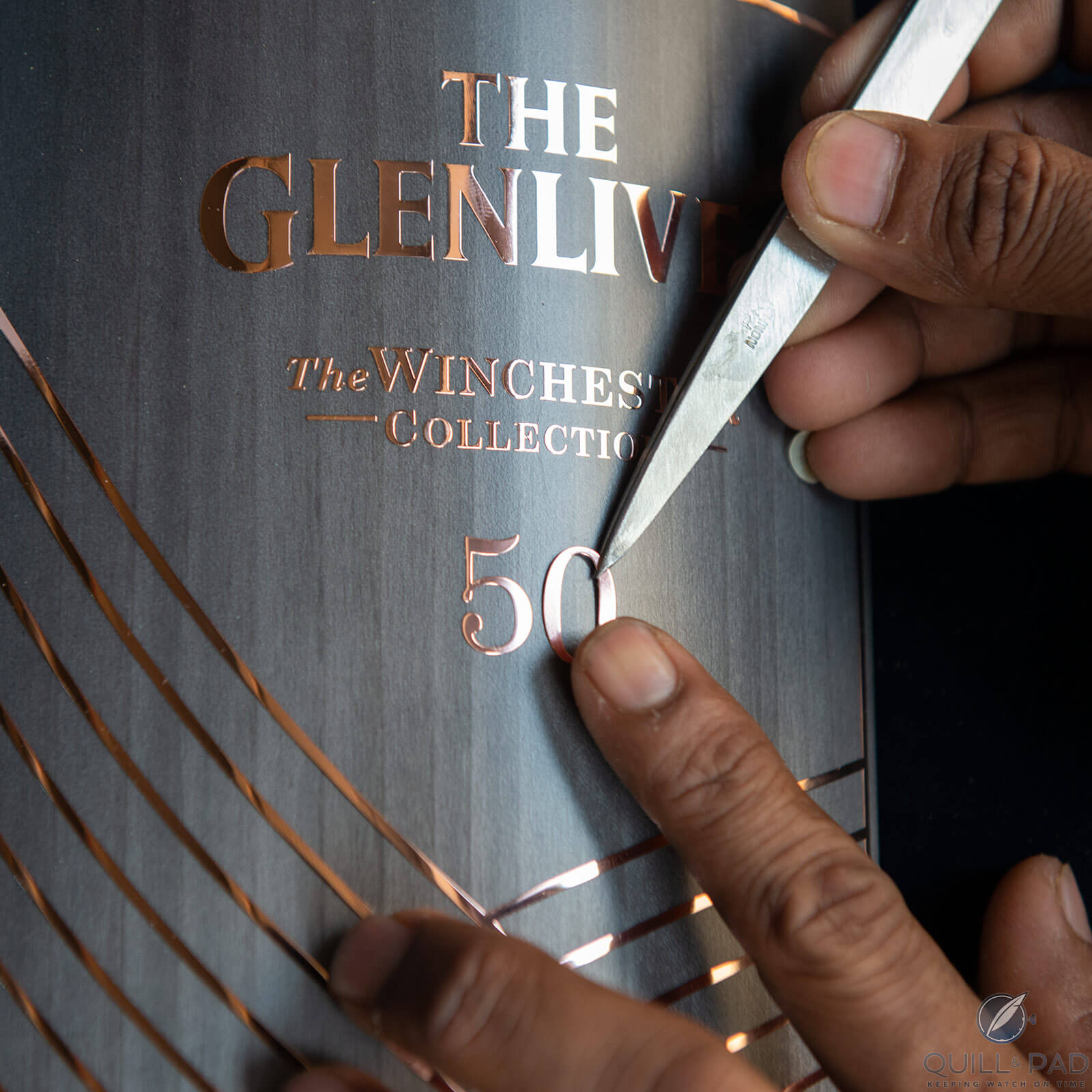
Positioning copper text and detailing on the packaging of the Glenlivet Winchester Collection Vintage 1967
With longstanding relationships forged over the years with craftsmen around the world to keep traditional crafts alive, Gray used the expertise of the same artisans she works with in Oman for her furniture collections to create the hand-stained maple veneer case overlaid with wavy lines of solid copper on a curved surface. These recall the River Spey and the layers of mist that appear in the valleys surrounding The Glenlivet distillery located in northeastern Scotland.
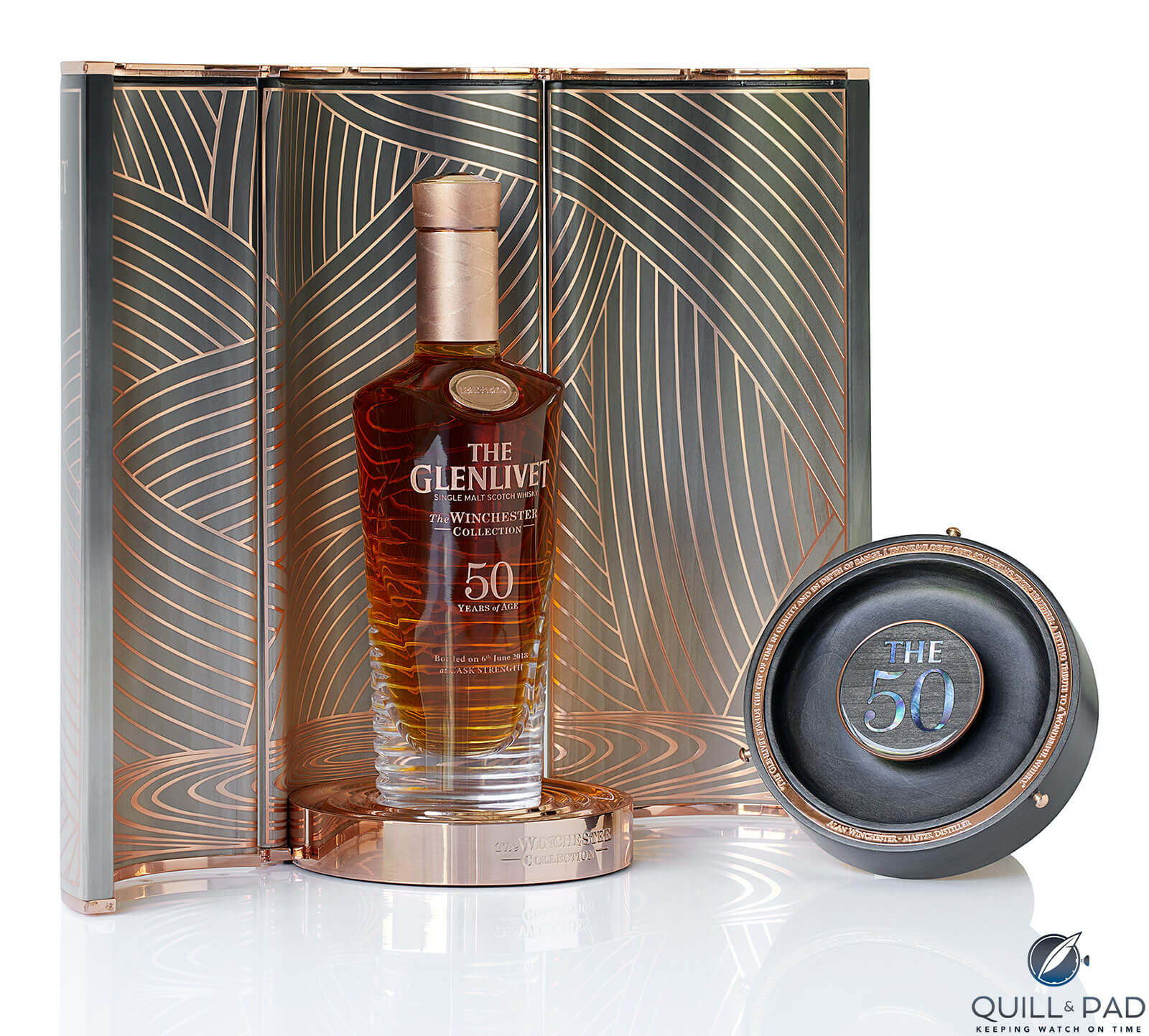
The Glenlivet Winchester Collection Vintage 1967
Inspired by the local freshwater pearl mussel shells Gray discovered in the Spey, she adorned the top of the case with mother-of-pearl.

Bethan Gray designing the Glenlivet Winchester Collection packaging
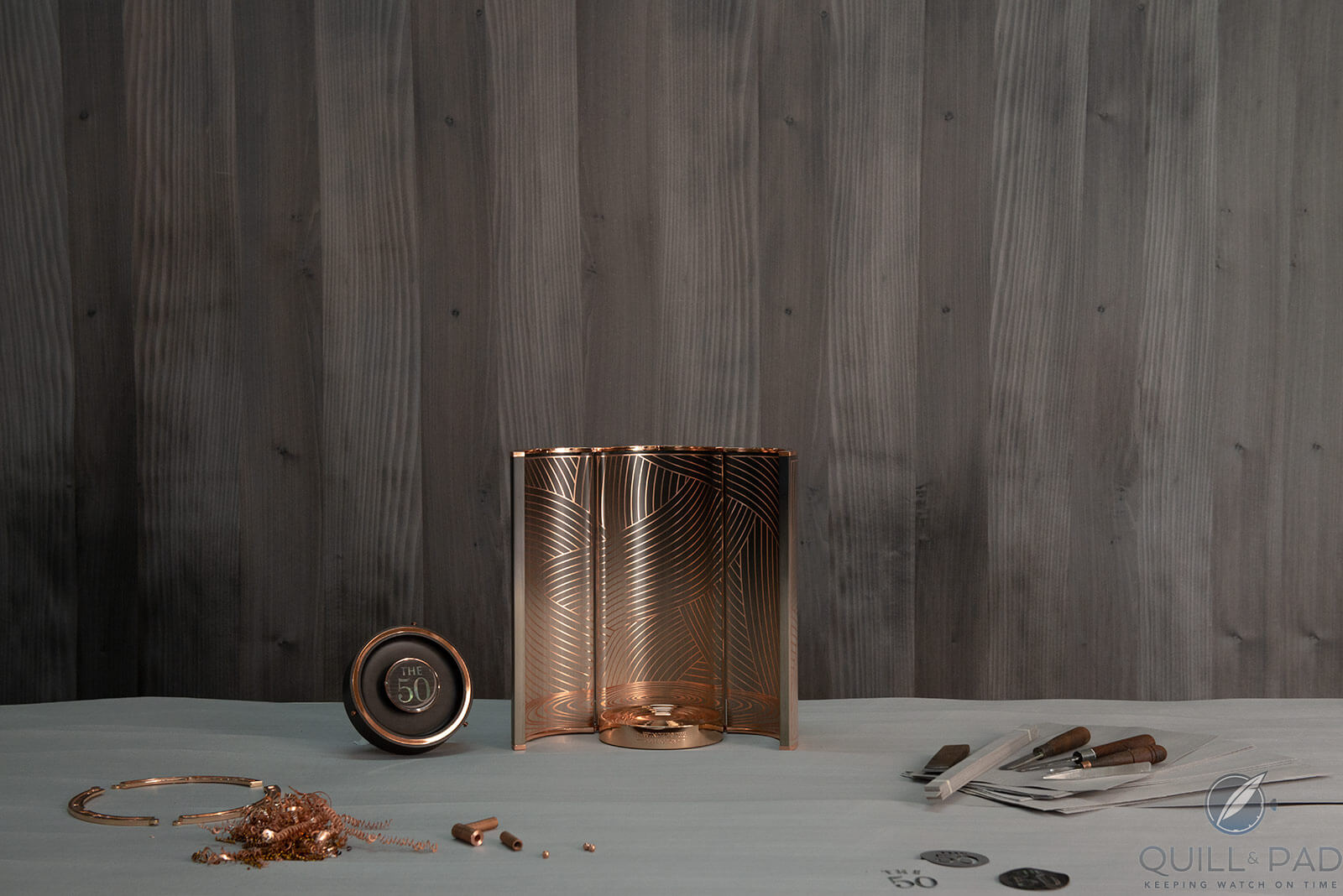
Making the case of the Glenlivet Winchester Collection Vintage 1967
She also collaborated with Highlands-based master glassblower Brodie Nairn, who hand-crafted the bottle and developed new techniques and tools for cutting it with horizontal lines to create an ombré color effect that mirrors the ageing process of the liquid inside.
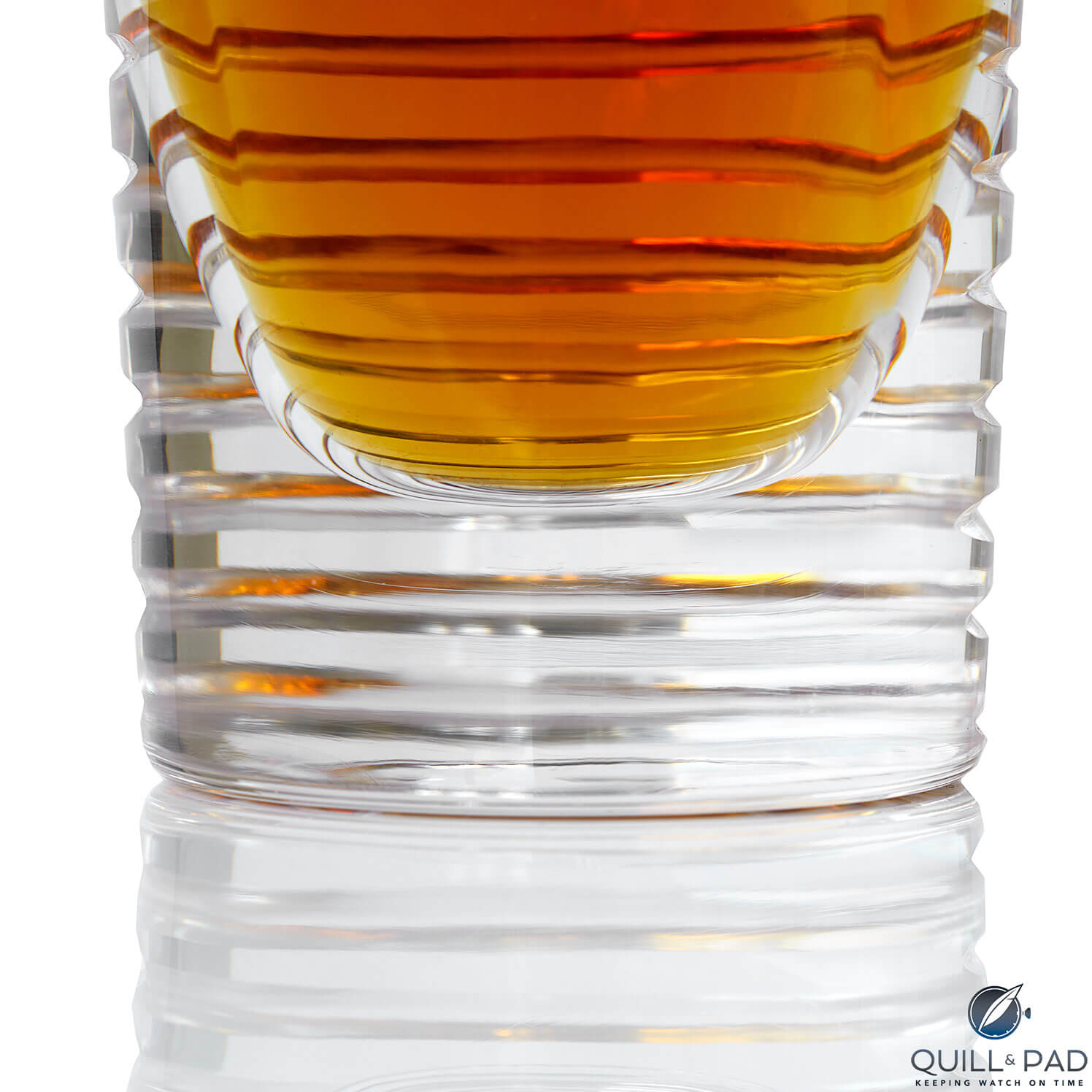
Intricately cut glass bottle of the Glenlivet Winchester Collection Vintage 1967
A blend of rare single malts from various oak casks – the youngest of which was filled in December 1967 – The Glenlivet Winchester Collection Vintage 1967 laid down by then master distiller Robert Arthur and monitored by subsequent master distillers from Andrew Shand to Jim Cryle is non-chill filtered at cask strength. It offers drinkers a rich and fruity nose with notes of apricot jam, sweet ripe peaches, and a touch of toasted almonds.

The Glenlivet Winchester Collection Vintage 1967 ready for tasting
The taste is smooth with fondant orange and milk-chocolate flavors, a velvety texture, and a long, sweet finish.
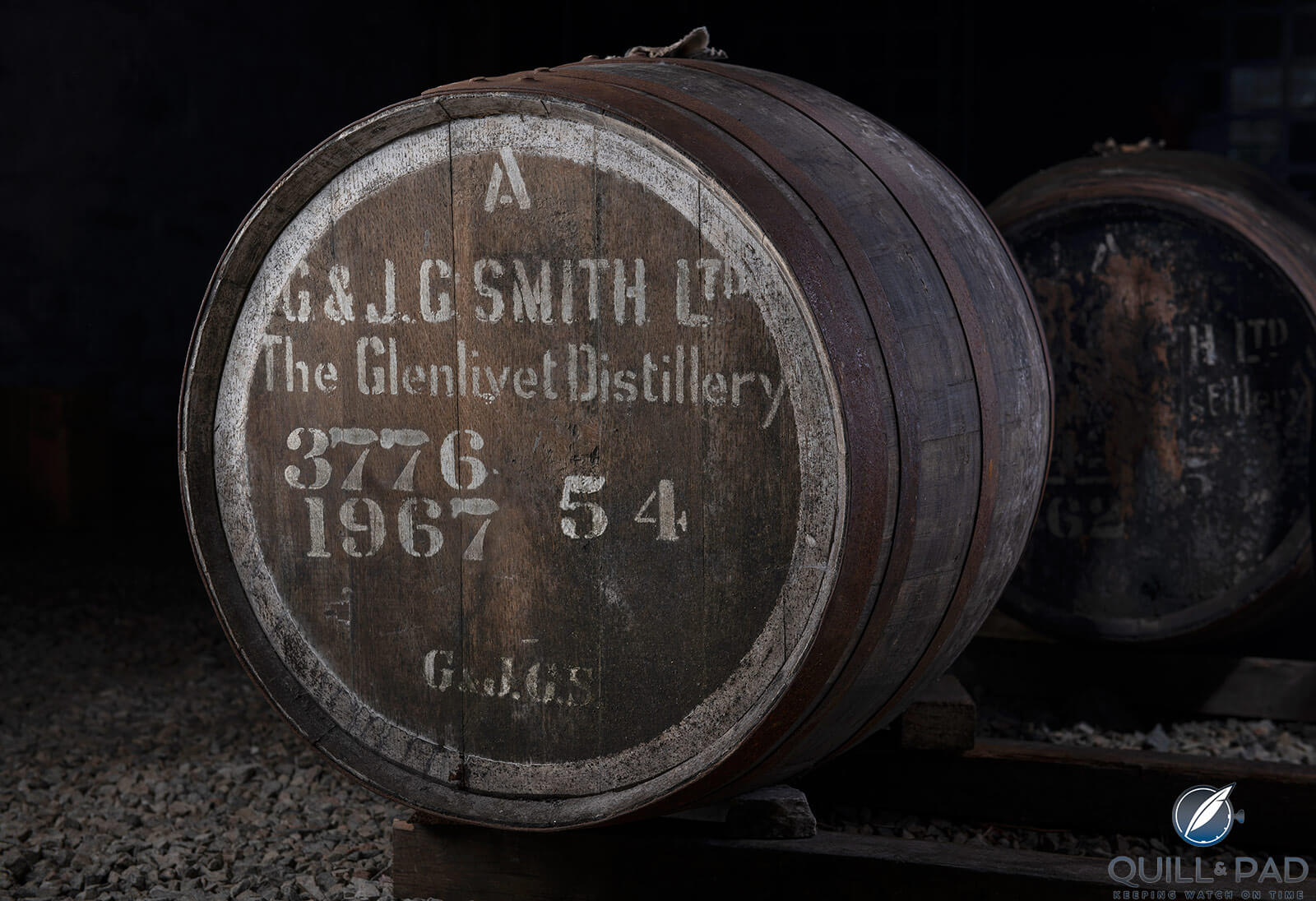
A cask involved in The Glenlivet Winchester Collection Vintage 1967
Known as the “angel’s share,” approximately two percent of the liquid evaporates through the wood of the cask into the atmosphere as it is slowly maturing, meaning that a 50-year-old whisky would have lost 60 to 80 percent of the liquid. Therefore, only a tiny amount of the Vintage 1967 was left for bottling in June 2018.
I sat down with Alan Winchester, who has been making whisky for more than 40 years, to discuss single malts and The Glenlivet’s latest release.
Q&P: What goes into the making of a good single-malt whisky?
AW: It can be done anywhere in the world and has been copied in different parts of the world. We picked up our knowledge of distillation hundreds of years ago because it probably came to us via Ireland. We believe it started in Asia.
It came to us via the learned society, through the monasteries, and it passed down to the farmers as the monasteries dissolved due to religious turmoil. The local peasant life would have been looking after the fields, very much like any society, making their own things, growing their own food, and maybe making some whisky because it was a wintertime occupation.
It was a way of the early people, if they had any surplus grain, to turn it into something that could make money for them, but also it was the type of climate we have – it’s a warming drink.

Master distiller Alan Winchester with a bottle of The Glenlivet Winchester Collection Vintage 1967
Making a good malt whisky is the raw material, the barley. The barley is grown locally for The Glenlivet because it’s a cereal that grows far north. We are 57 degrees north, at the same latitude as probably Alaska, where it grows well. The climate here is great. I’ve often put it down to the magic of location because we’re born distillers, but we take very simple ingredients, three natural ingredients – water, barley, and yeast – ferment them into a beer and distill it in a copper still twice.
It’s very simple, but it produces this lovely, complex, clean spirit that we will adapt by maturation in oak casks. Even the maturation is an accident because the easiest way to move spirit about in any quantity is in a wooden container, and that was found to improve the spirit as it matured.
Q&P: Why do you use copper stills?
AW: We don’t have to use copper stills by law, but copper is an amazing material, going back to the early distillers. That we know because the Arab scholars wrote about copper pots since it’s a material that’s easy to make into a container.

Copper stills at The Glenlivet distillery
Copper also acts as a catalytic converter, and it makes the spirit appear fruitier and cleaner. Any departure from copper is fraught with quality problems, and that’s why even modern-day distillers use a lot of copper in stills, and you’ll see these stills at The Glenlivet.
We have local skills that make these copper stills because 150 years ago, everything was copper: houses and ships were all built with copper pipes, so it was an important trade. It was like coopering. It served the whole community. Now it’s more specific, just for making whisky.
Q&P: What is the minimum amount of maturation time for The Glenlivet whisky?
AW: For a whisky to be called Scotch whisky, it must be matured for three years in an oak cask. Now The Glenlivet spends many more years in maturation with the 12, 15, 18. and of course up to the 50 year old, which is the top end of the range that we produce.
We also have the Founder’s Reserve. We don’t put an age on it, but we use whiskies of different ages to produce a style of whisky that we think works very well with the rest of The Glenlivet range.
Q&P: How did The Glenlivet become a pioneer of the single-malt Scotch whisky category?
AW: In the seventeenth century whisky was forced underground in certain parts of Scotland, and there were legal distillers but their quality wasn’t very good because they tried to beat taxation methods. So the industry spread out to the remoter areas and became concentrated in areas like Glenlivet. And the whisky was produced illegally, but its quality was good.
It became famous for its better quality and smuggled to different parts of Scotland. The government of the time then decided to reform the legislation and tried to encourage the illegal distillers to become legal distillers. The Glenlivet by a process of illegality had found the best place to make good-quality whisky that the market wanted. So the landowner of the time, the Duke of Gordon, the clan chief of the family Gordon, decided to encourage certain folks in his estates to make legal whisky.
The Glenlivet founder, George Smith, was one of them. He made good whisky and was also a strong guy who was going to stand up for himself and make legal whisky. The fame at The Glenlivet was there before it even went legal, and it was a forerunner of the Speyside style, which is basically that lovely fruity, floral style.
If you go west, there tend to be the peatier whiskies, and the Highlands can produce heather-like, robust notes or even the delicate Glenmorangie styles. It reflects the areas.
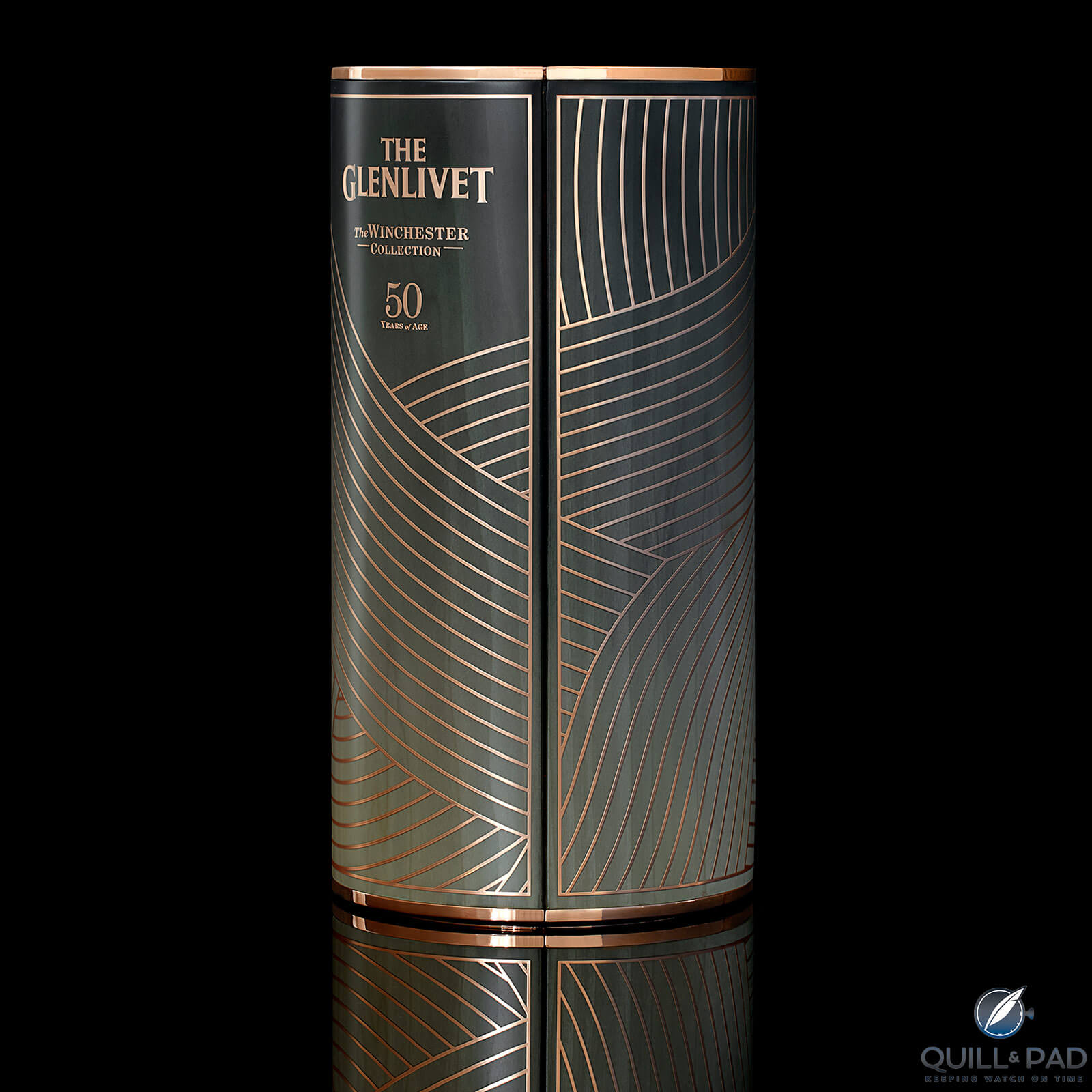
The Glenlivet Winchester Collection Vintage 1967
Q&P: You first started working for The Glenlivet in 1979 before becoming its master distiller in 2009, safeguarding its house style . . .
AW: As a master distiller, you become a guardian of The Glenlivet. My biggest critics sometimes would be some of the folks within the company who demand that the style is kept as consistent as possible with that style of fruity, floral whisky with a chewy toffee sort of flavor.
Q&P: What are the particularities of The Glenlivet Winchester Collection Vintage 1967 you’re currently launching and how different is it from the 1964 and 1966 releases?
AW: It’s very important that they are all uniquely different because they’re limited volumes. We started the first two to extend The Glenlivet range right up to 50 years. Luckily, my predecessors laid down stocks of whisky that would be available in the future.
There are only 150 bottles of this 1967, which is a 50-year-old Winchester Collection. We reckon that this 1967 is at the epitome of its maturation, so we are bottling it to present The Winchester Collection.
It’s a lesser volume to deal with, so more of the individuality of the cask it’s been matured in to produce this unique style. It’s very different from the previous two bottlings. It’s full of fruit, which I would expect from The Glenlivet, hints of apricot jam, toasted almonds, very smooth taste, a sort of velvety texture to it, a nice 48 percent strength because rule of thumb, it can lose half a percent of strength per year, but it’s kept its strength and it’s made it these sorts of lovely, delicious flavors.
Q&P: How often was The Glenlivet Winchester Collection Vintage 1967 tasted as it matured?
AW: I don’t know, but it was laid down in 1967 when I was still at school. The Glenlivet at that time would have been a 12-year-old product, so they would have probably looked at it in about 1979 when I joined the company.
We can look at it at different stages of its life and say maybe we’ll use it now or it’s capable of more maturation, up to 50 years, or some of them can go further. But the law of maturation is you keep losing volume every year, so it’s an ever-decreasing amount. You’ve also to watch that its strength doesn’t dip below 40 percent because then it doesn’t become Scotch whisky.
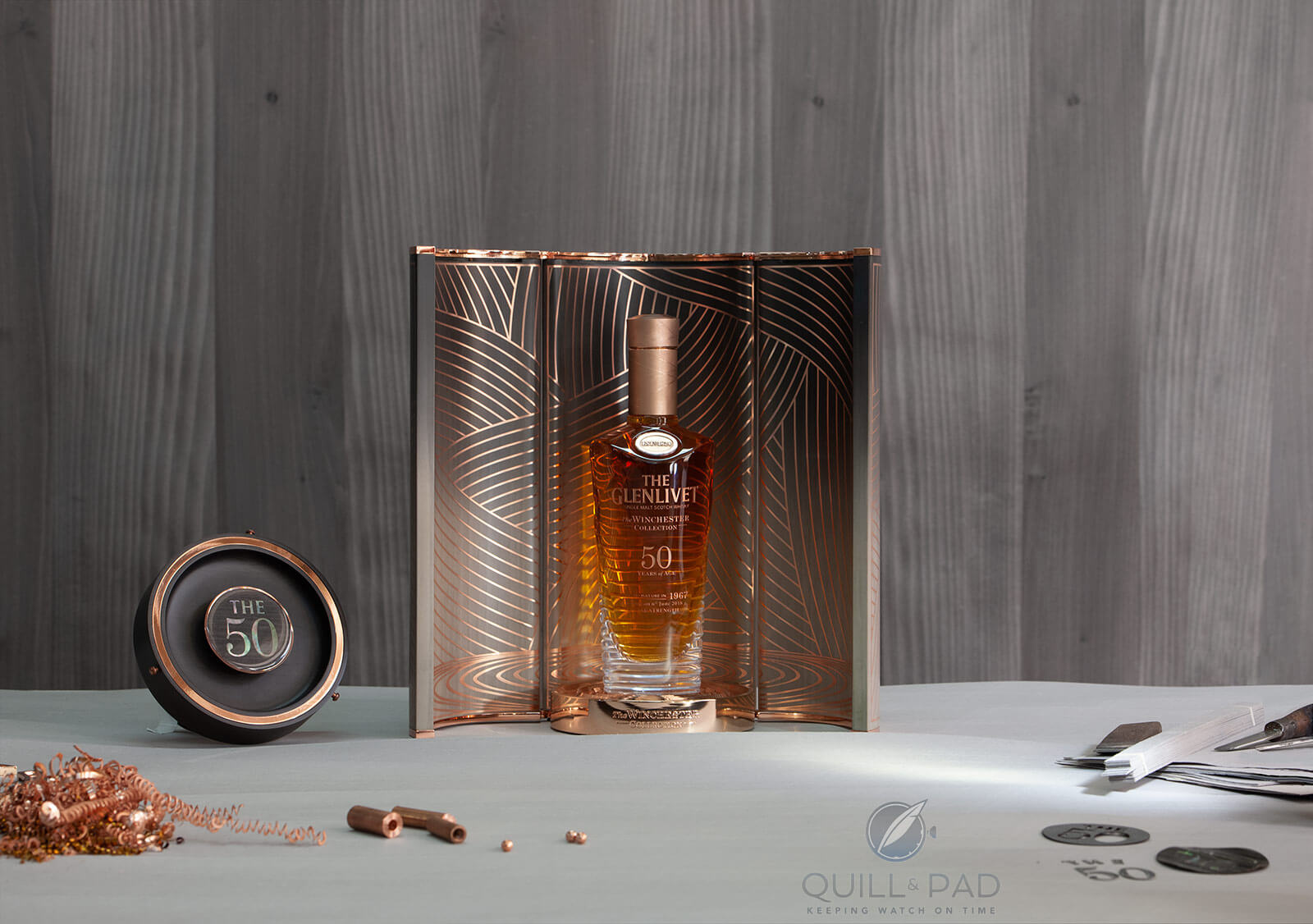
The Glenlivet Winchester Collection Vintage 1967
Q&P: What warrants its $25,000 price tag?
AW: Partly because the angels have had so much share of it over the years, so it’s less and less, and it’s concentrated its price up. We’ve also done the work with Bethan Gray to produce this lovely complement to the craftsmen of The Glenlivet.
We’ve crafted up this lovely packaging to enhance this very special whisky with something special in design. The previous two bottlings were slightly different, but we thought Bethan as Designer of the Year perfectly complemented. Bethan is a craftsman in her own right, just like The Glenlivet distillers are craftsmen in our own right.
For more information, please visit www.theglenlivet.com/the-collection/winchester-vintage-1967.
* This article was first published on April 23, 2019 at Glenlivet Winchester Collection Vintage 1967: Ultra-Rare 50-Year-Old Single Malt Scotch Whisky Selling For $25,000 Per Bottle.
You may also enjoy:
Last Drop 1971 Blended Scotch Whisky: Is This The World’s Most Exclusive Whisky?
Make Mine A Double! The Macallan Whisky Mechanical Hip Flask By Urwerk
Glenmorangie Signet: Rooted In Pictish Design And Worth Seeking Out
Leave a Reply
Want to join the discussion?Feel free to contribute!









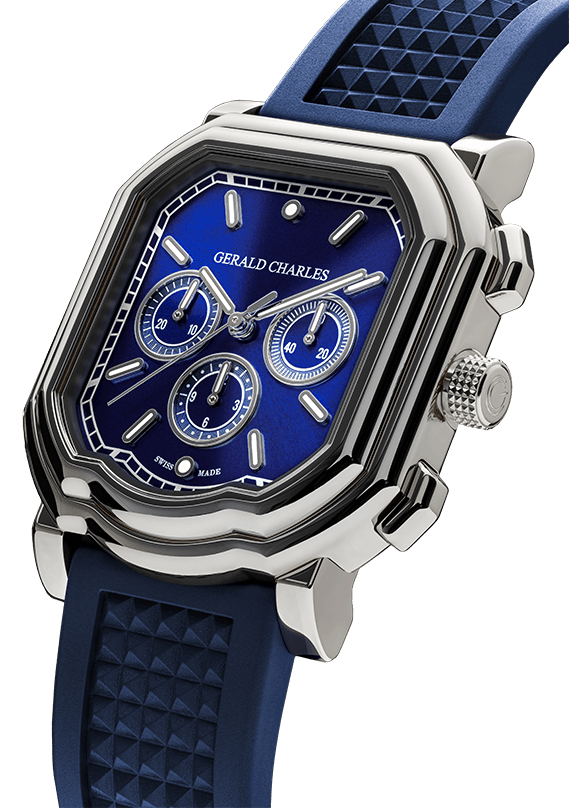







































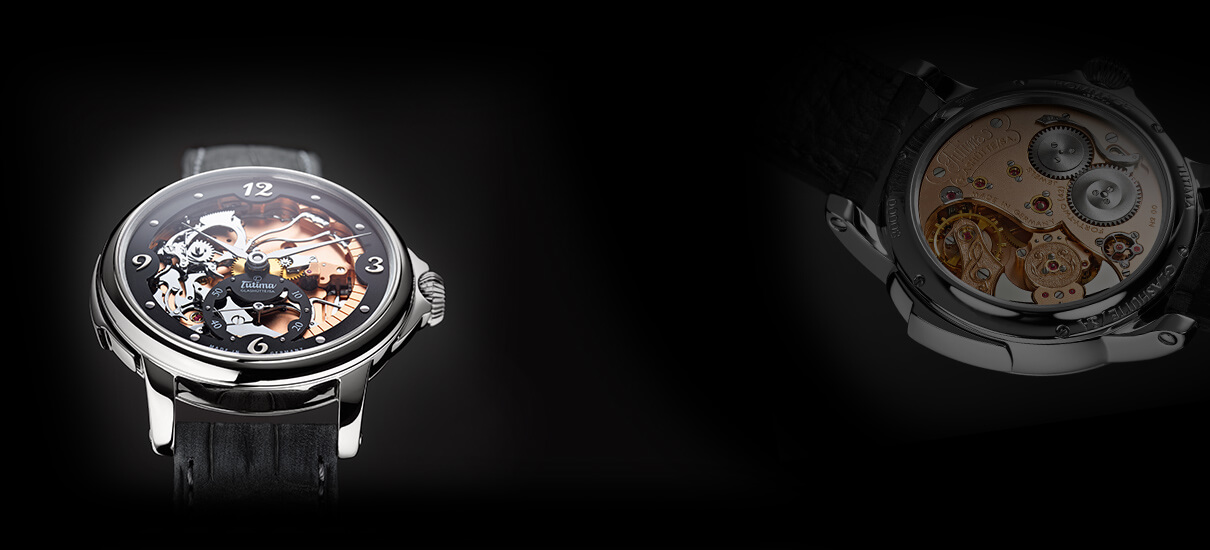



Get yourself some some of the nice fruits they say this taste like and save yourself 25k plus no hangover !
You know I also noticed that if you substitute cocaine for the word scotch ,the story would be the same or almost, to that of a Columbian of today telling his story of how we had to hide this, smuggle that ,I guess because in the end, they are both drug dealers, just one is legal and the other, not so much…yet ?